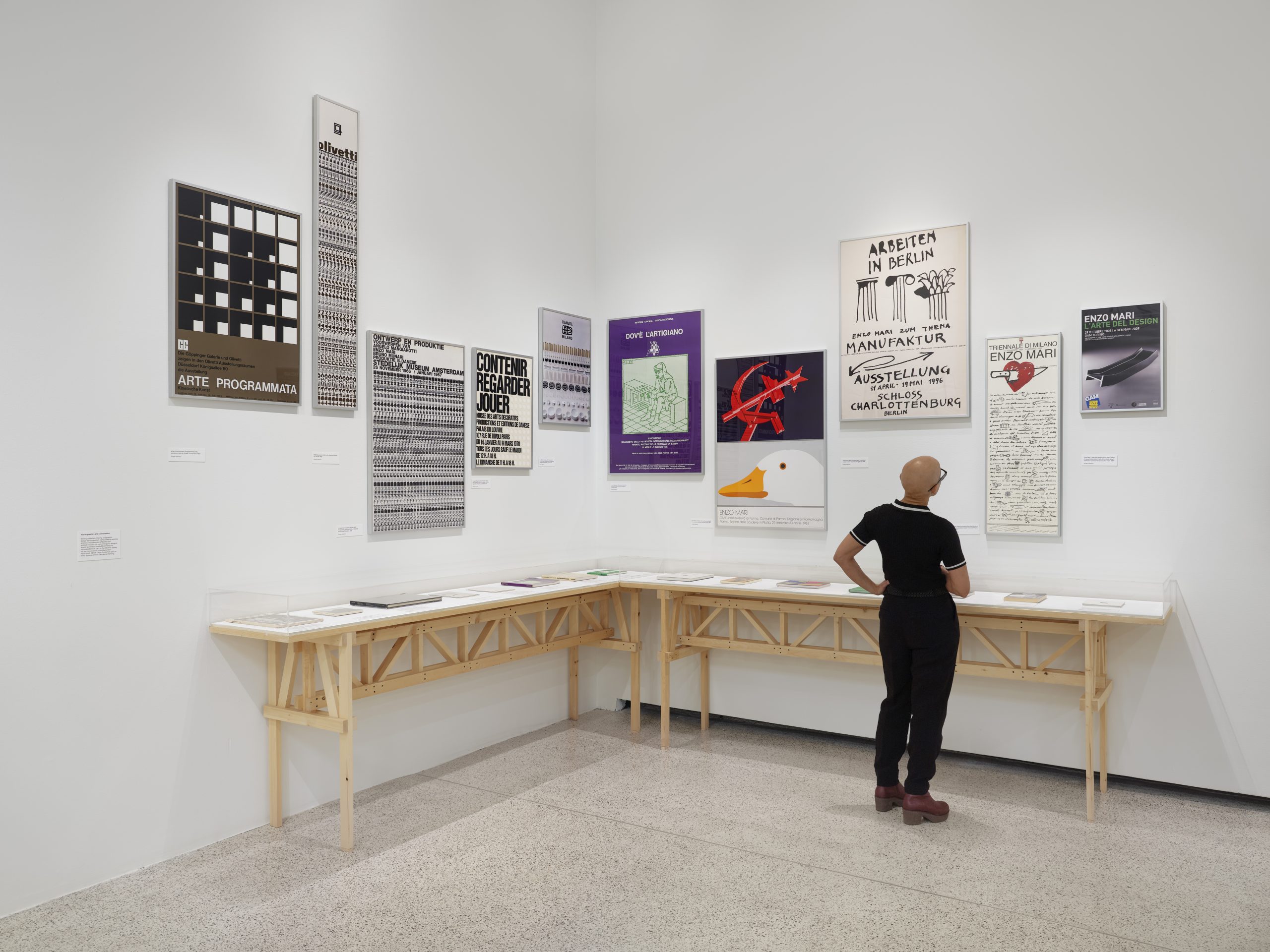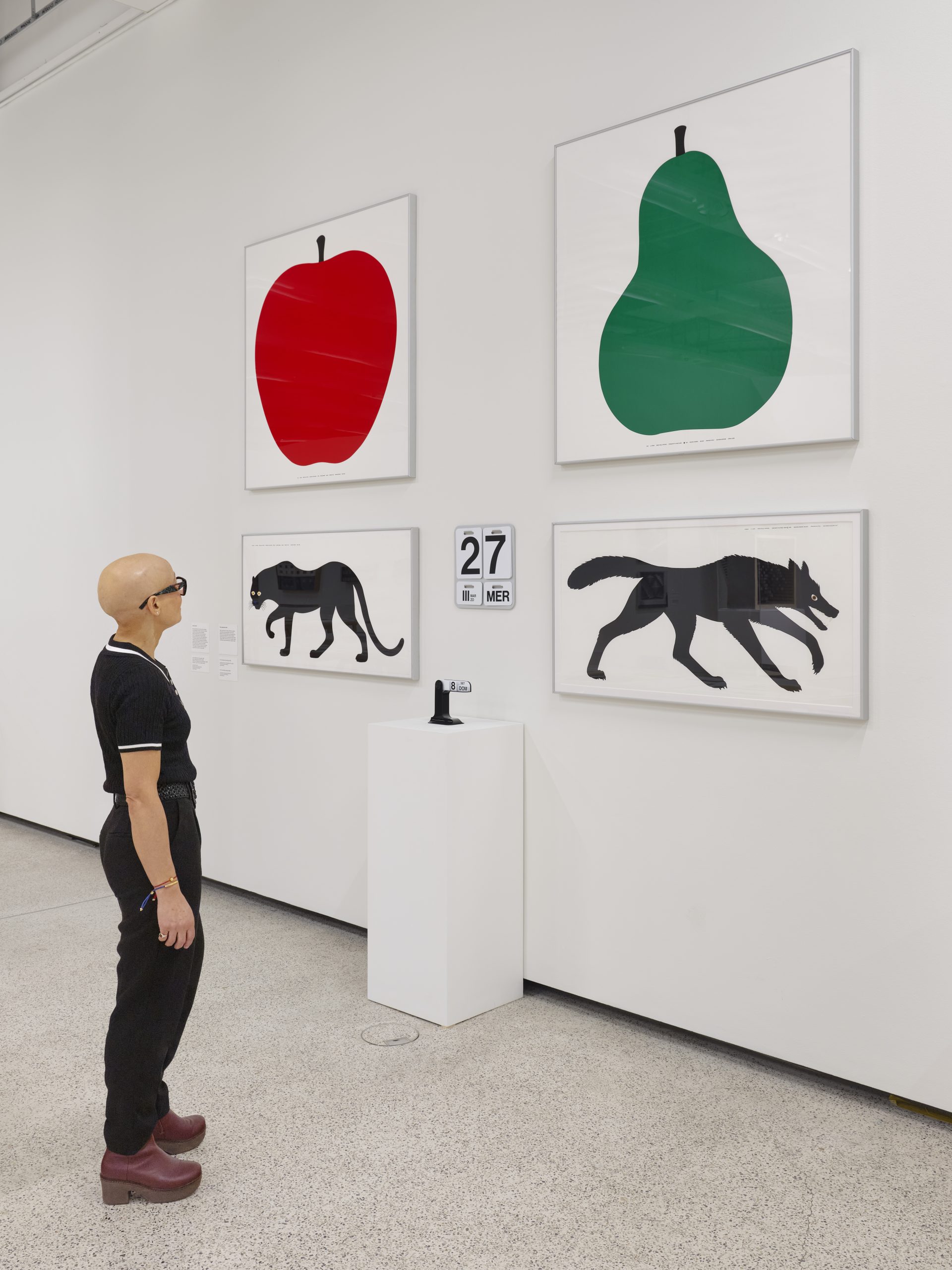Italian designer, theorist and critic Enzo Mari once described the work of his contemporaries as mere ‘pornography’ made by ‘the Italian mafia for the Russian mafia’. Such was the uncompromising way Mari dismissed what he saw as fashion-led products that only served to flatter their makers and those who could afford to buy them.
Mari – who died in 2020 following Covid-related complications – was a life-long Marxist who believed designers should be socially responsible, creating work in service of society, not themselves. The end-user had to be first and foremost in the designer’s mind, and this sentiment underscores each of the 300-plus objects from Mari’s 60-year career brought together in this major retrospective at London’s Design Museum.

Installation view
Exhibits are arranged in chronological order, allowing visitors to see the continuity and development of his ideas. One of the first works on display is a photo of a conical chamber he developed while studying at the Brera Academy of Fine Art in Milan in the early 1950s. The instrument aimed to help him analyse the effects of light on users’ perceptions of colour and space. This focus on viewer experience can also be seen in his early paintings, which juxtapose repetitive forms and lines, and in his ‘structures’ – wall installations and free-standing models that play with colour, depth, space and repetition.
Advertisement

Installation view
Mari began collaborating with manufacturer Danese Milano from 1958, an entry into the world of industrial design that allowed him to connect directly with the masses. He started by experimenting with semi-finished building materials, applying the slightest interventions to create new products. The Ferri Saldati (‘welded iron’) series welded iron plates together to create minimalist tabletop items, while his celebrated Putrella (‘girder’) series repurposed iron beams, creating items such as fruit trays by subtly curving the edges.
Proposta per un’autoprogettazione was an instruction guide that attempted to put furniture production directly in the hands of the people
Mari also sought to empower users as active participants in the design process in the hope this would help them appreciate good design and turn their backs on an increasingly consumerist industry. An early example is Glifo (1966), a modular bookcase composed of interlocking plastic panels, which can be reconfigured according to need.

Close up of The Nature Series
By the 1970s, Mari had become far more ambitious in his attempts to democratise design. Aggregato (‘aggregate’) provides the basic components of lighting (such as bulbs, clamps and lightshades) which users can assemble into 72 different lighting configurations. But his most radical project was Proposta per un’autoprogettazione (‘proposal for a self-design’) – an instruction guide to 19 furniture items that could be easily created using wooden boards and nails. This was published as a catalogue available to anybody for the cost of postage – an attempt to put furniture production directly in the hands of the people.
End-users could also be children. Mari became a father early in his career, which led him to create games and books that gave creative autonomy to children in the hope they would fashion a better society as adults. One of these games is Mari’s best-known work: 16 Animali (designed in 1957, produced in 1959), a puzzle cut in one continuous line from a single piece of wood, with each animal recognisable from its outline. It’s still in production today – on sale for a very un-Marxist €400.

Source:Eva Herzog for the Design Museum
16 Animali wood-cut puzzle (1957)
The second half of the exhibition features some of Mari’s conceptual installations, recreating an exhibition he held in Milan in 1989. Ever the revolutionary, Mari regarded the objects, which included communist symbols such a cabinet of sickles and scythes, as archetypes of perfect form.
Advertisement
The exhibition succeeds in conveying the sheer breadth of Mari’s creative work and how his personal convictions permeated his entire output. Where the exhibition could have gone further is in providing the wider context of what was happening elsewhere in the design world at the same time. It’s difficult to appreciate Mari’s pared-down aesthetic without setting it against the flair of much post-war product design. His anti-consumerist philosophy makes more sense set against the often vulgar products that became status symbols in the second half of the 20th century.

Close up of Lo zoo di Enzo by Nanda Vigo
Based on a retrospective shown at Triennale Milano in 2020 for which Mari chose the pieces himself, this exhibition may be the last chance we get to appreciate such a wide collection of his works in one place for some time. Mari bequeathed his archive to the city of Milan but on the condition it is not shown for the next 40 years until an ‘unspoilt’ generation emerges that can make better use of it.
Enzo Mari at the Design Museum, 224-238 Kensington High Street, London W8 6AG, runs until 8 September. It has been curated by Hans Ulrich Obrist with Francesca Giacomelli
Top image is of equipment for research on colour and volume relations (1952). Photo attributed to Paolo Monti
 The Architects’ Journal Architecture News & Buildings
The Architects’ Journal Architecture News & Buildings
Leave a comment
or a new account to join the discussion.